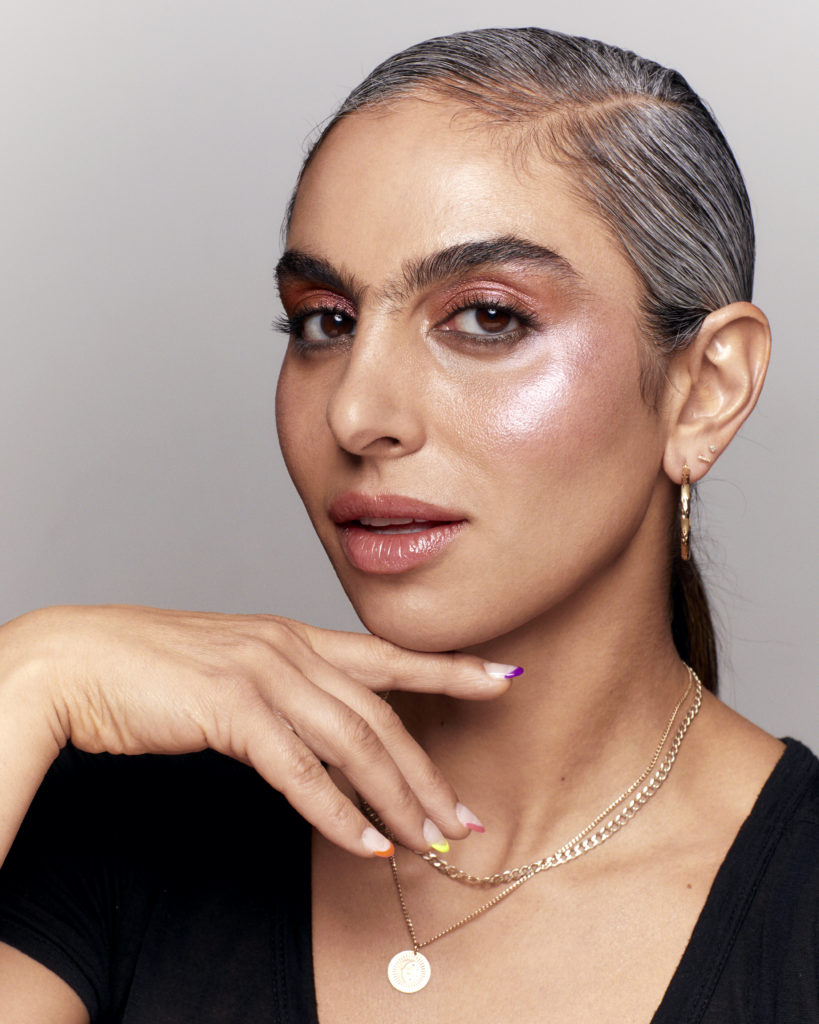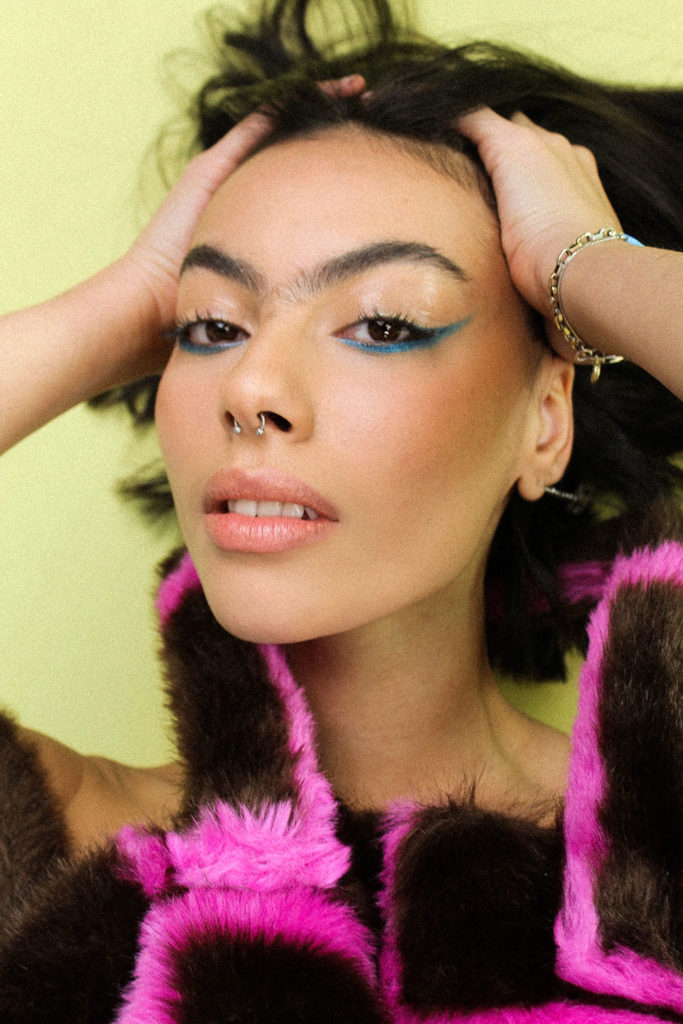Brows have always been an important part of beauty, easily evidenced in the evolving—and sometimes, repeating—trends through the decades. Think Marlene Dietrich’s exaggerated razor-thin shape, Diana Ross’s pointed arches, Brooke Shields’s full, ’80s-era brows, Kate Moss’s skinny set, or Cara Delevingne’s bold and bushy pair. For the most part, brow trends have represented Eurocentric ideals. Unibrows, on the other hand, have rarely been given the spotlight, with few references beyond Frida Kahlo.
In recent years, the call for inclusivity and body positivity in the beauty industry has paved the way for stories about everything from deeper skin tones to body hair. Greek–Cypriot model Sophia Hadjipanteli has been credited with popularizing the #UnibrowMovement on Instagram, which celebrates the single brow. Meanwhile, some outlets have even declared unibrows a beauty trend. But for BIPOC communities, the complicated relationship with unibrows goes beyond a social media fad or an aesthetic choice.

Shari Siadat for TooD Beauty: photographed by Diego Bendezu.
From ancient Greece to Iran’s Qajar dynasty, unibrows were revered as a symbol of beauty and even intelligence. In the West, particularly for immigrants living in the diaspora, the unibrow has been a source of both pride and pain: it signifies cultural traditions and rituals but has also caused trauma.
Growing up, Shari Siadat did everything possible in order to fit in with the people around her. The Iranian–American model, author, and founder of TooD would obsessively pluck, wax, and bleach her facial and arm hair. She found ways to camouflage her identity well into adulthood, until the birth of her third daughter, who looked more like her, rather than her husband. “She was very much a mirror to make me ask myself, why am I running away from this face? I love this face on my daughter, so why don’t I love it on myself?” she says. Siadat decided to let go and grow the hairs she spent a lifetime concealing.
The realization also inspired Siadat to launch TooD—a unisex range of vibrant brow colour creams that celebrate rather than groom or camouflage brows. “I decided that [it was] my form of activism,” she says. “I was very much looking for a superhero mask to highlight that part. [It] was throwing colour and crystals on parts of you that are unique.”
Mashia Anjum, a Bangladeshi–British makeup artist living in London, also grew up hating her unibrow because of the bullying she experienced. She wanted to get rid of it, but her mom wouldn’t let her. “In my culture, it’s considered good luck,” she explains. She eventually grew to love it, but that didn’t mean everyone else did too.
People still idealize a certain standard of beauty, notes Anjum. “Some have asked me why I don’t get rid of it, as it makes me look ugly. I also have been asked if my brows are a part of Halloween makeup or not!”

Ghita Zemzami: photographed by Éléonore Côté-Savard. Makeup by Claudia V.
For Ghita Zemzami, a Montreal-based model and designer, her distinct brows are a badge of honour that represents her Moroccan heritage. Once tweezer-happy, she realized that she couldn’t tell people to embrace their insecurities when she was plucking her own brows behind closed doors. “I go out proud and confident knowing that this is something I chose to love instead of hate,” she shares. For her, the #UnibrowMovement represents a shift in the right direction. “I love to see more and more people embracing their biggest insecurities and wearing them proudly.”
The stories are as unique as unibrows themselves, and the more visibility and representation they’re afforded, the more they can be embraced in all their beautiful and complicated glory.

